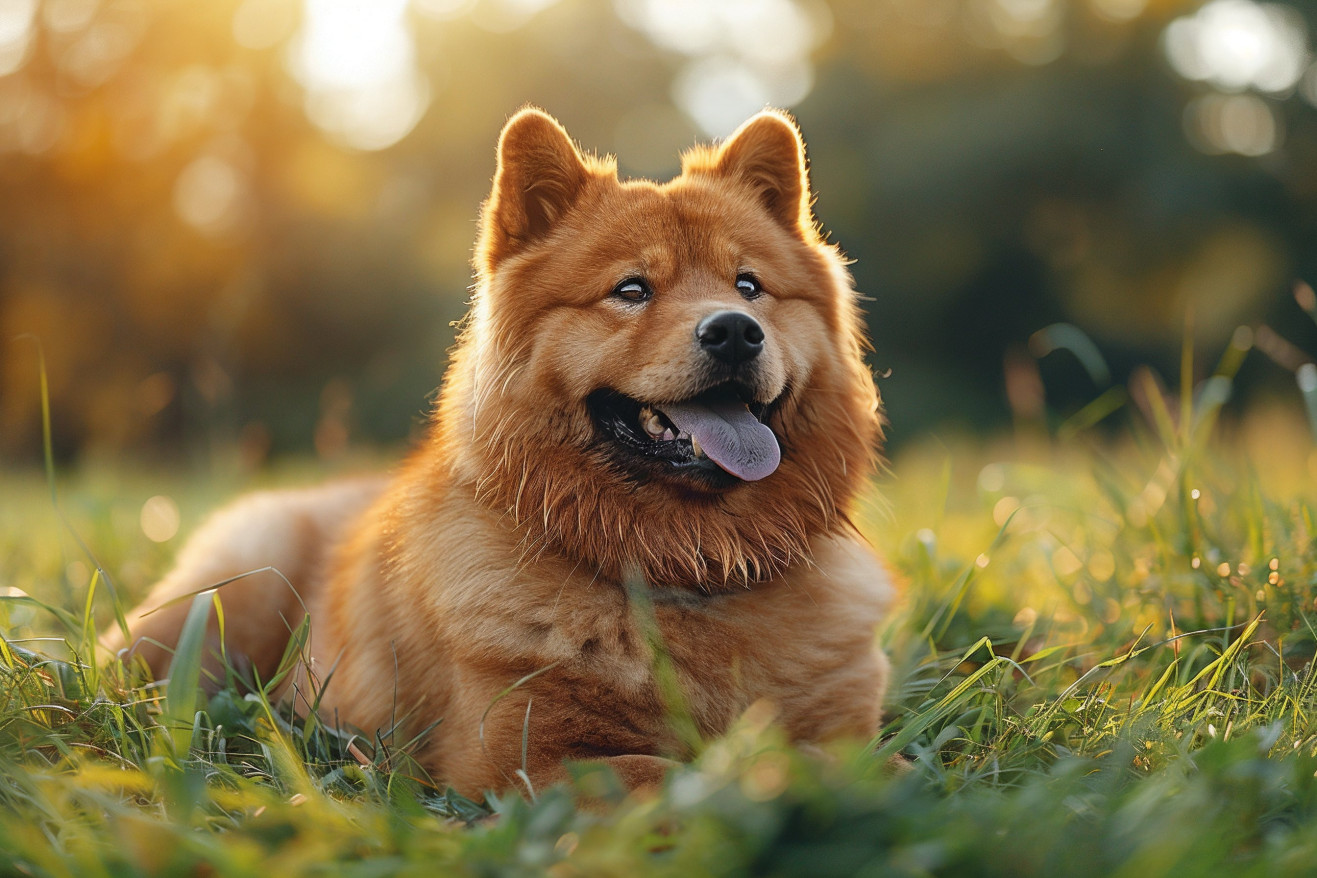Why Do Some Dogs Have Purple Tongues?
4 March 2024 • Updated 4 March 2024

More than just a fun fact, the purple tongue in dogs is a genetic mystery. It is a result of a genetic mutation that has been passed down through generations of certain dog breeds, including the Chow Chow and Chinese Shar-Pei. The purple tongue is a result of a high level of melanin pigmentation. While this genetic quirk doesn’t have any bearing on the health of the breeds, it does make them easily identifiable.
This article will take a deep dive into the genetic mystery of the purple tongue in dogs, including genetics and veterinary science. We will look at research on breed-specific genetics, animal pigmentation biology, and whether there are any health concerns that come with this unique trait. This investigation will reveal the cultural history, genetic origins, and wider biological implications of the beautiful purple tongues of some of our favorite furry companions.
Why do some dogs have purple tongues?
The Genetics of the Purple Tongue
The purple tongue of certain dog breeds, most notably Chow Chows and Shar-Peis, has been the subject of interest for geneticists and dog enthusiasts. The trait is caused by the presence of melanin, the same pigment that determines skin and hair color. The Veterinary Genetics Laboratory notes that genetic factors such as the A locus determine pigment patterns in dogs, although this research has mainly focused on coat color and not tongue pigmentation.
On the other hand, a study cited by Medium indicates that certain pigmentation genes are responsible for the blue tongue in Chow Chows, with different melanin levels causing differences in the depth of color. This genetic predisposition may have had evolutionary advantages, including protecting against UV radiation in the extreme climates where these dogs were first bred.
Yet, geneticists have yet to fully comprehend the genetics of the purple tongue. While the exact genetic causes of the purple tongue remain somewhat enigmatic to geneticists, the mystery of the trait has continued to motivate scientific research. As we admire the genetic variation that can manifest in such a visually striking way, we are also reminded of the complex interplay between genetics and the environment that has shaped our four-legged friends.
The Mythology of Purple Tongues: A History Beyond Color
The purple tongue of dogs like the Chow Chow is more than just a genetic oddity. It is also a product of cultural mythology.
In ancient China, one of the most popular stories about the Chow Chow’s tongue is that the dog, originally a temple guardian, got its blue-black tongue by licking up the last bits of color as the sky was painted.
In another story Hanniko tells, the gods punished the dog-dragon Chow Chow by making sure its tongue was always blue-black. Both of these stories show how the breed was revered in Chinese culture as a symbol of protection and guardianship.
Wikipedia even points out that the Chow Chow has been a part of Chinese culture for thousands of years and that their appearance is similar to the stone lions that guard Buddhist temples. This history may have led to the perpetuation of the purple tongue trait through selective breeding as a way to make sure the trait was passed on or to make it more pronounced as a sign of nobility or rarity.
While the way purple-tongued dogs are viewed today has changed, they still capture the imagination. But as much as we love the stories and the look of these dogs, it’s important to remember that the cultural mythology that surrounds them is just as fascinating and important as the genetics.
Health Issues Associated With Dogs With Purple Tongues
While the purple tongue that is unique to Chow Chows and Shar-Peis is a harmless genetic trait, it is important for dog owners to continue to monitor their pets’ oral health. According to the American Kennel Club, the purple or blue color is a result of an overproduction of melanin, and this is generally not a cause for medical concern.
However, it is important to watch for any changes in the color of the tongue, as this could be a sign of a more serious health issue.
Veterinary research, including a study published in the Public Library of Science, has shown that oral mucosal melanoma, while not associated with the purple tongue trait, is a highly malignant cancer in dogs.
New spots or changes in existing spots on the tongue may be a sign of melanomas, so it is important to make sure that dogs are seen by a vet for regular check-ups.
In addition, it is important for dog owners to make sure that they take their pets to the vet if they notice any sudden changes in the color of their dog’s tongue, especially if it is accompanied by difficulty breathing, as this could be a sign of cyanosis, a life-threatening problem with blood oxygen levels.
Dog owners should make sure to check their pets’ mouths for any signs of problems on a regular basis and continue to practice good oral hygiene. This will help to make sure that their pets stay healthy and happy, regardless of the color of their tongues.
Health Issues in Purple-Tongued Dog Breeds
In addition to the aforementioned skin and eye conditions, purple-tongued breeds like the Chow Chow and Shar-Pei are prone to a number of other health problems, although none of these are related to the color of their tongues.
A study in PMC notes that Chow Chows are at risk for developing pemphigus erythematosus, an autoimmune skin disease, and are more likely to develop gastric carcinoma than other breeds. The Universities Federation for Animal Welfare also says that Chow Chows are genetically predisposed to entropion, a painful eye condition.
While there is no evidence that purple tongues are linked to any specific health issues, it’s important for breeders to know about these breed-specific genetic predispositions that can affect the health and well-being of these dogs.
Responsible breeders will screen for these issues and avoid breeding dogs that have heritable health problems.
People looking to buy a dog from a breeder should make sure they are working with someone who follows these guidelines to ensure they get the healthiest dog possible. By being aware of these health issues, breeders and owners can ensure they are taking the best care of these dogs and helping to maintain the special qualities of these popular breeds so they can continue to be a part of our lives.
The Colors of Nature: What Determines Dog Pigmentation?
Melanin is the pigment responsible for skin, hair, and eye color in mammals, including dogs. An article in PMC provides an overview of the complex biological process that controls the production of melanin, which is called melanogenesis.
In addition to determining color, melanin also provides protection from ultraviolet radiation (UVR). In dogs, the same process that produces melanin is responsible for the purple tongue trait in some breeds, and the type and distribution of melanin in the skin and mucous membranes determines whether or not a dog has a purple tongue.
The importance of pigmentation goes beyond how an animal looks. It is also critical for an animal’s ability to adapt and thrive in its environment. Pigmentation can help animals blend in, signal their health to potential mates, and protect them from the sun’s harmful rays, according to a report in Nature.
While the specific benefits of a purple tongue in the dog’s ancestors can only be guessed at, it’s likely that the trait was adaptive in some way, perhaps in response to the environmental conditions in the areas where the breeds that have purple tongues originated.
When we think about the colors of nature, we can see that differences in pigmentation, like the striking purple tongues of some dogs, aren’t just quirks but are instead part of the larger story of evolution. Each one represents a tale of adaptability and survival, and together they make the natural world a richer and more beautiful place.
The Myth and Science of Purple Tongues in Dogs
While the purple tongue in some dogs remains a genetic mystery, it has turned out to be a harmless trait with roots in ancient cultural mythology and intriguing evolutionary biology. Our studies have shown that breeds like the Chow Chow and Shar-Pei have the trait due to genetic mutations that affect melanin levels—a genetic trait that is part of their DNA and has no negative health effects.
Cultural myths, especially those from ancient China, have imbued these breeds with a sense of mystery that has lasted for centuries, mythologizing their purple tongues as a sign of protection and royalty. While the genetic coding behind the trait has yet to be fully explained by modern science, it has continued to capture our imagination and appreciation for the vast diversity of the dog world.
Thinking about the marvel of genetic diversity in dogs also reminds us of the importance of taking care of these special animals. Dog owners and breeders alike need to make sure that dogs with purple tongues are healthy and happy and that their genetic diversity is maintained so that they can continue to be beloved members of our families.
We need to not only celebrate the uniqueness of dogs with purple tongues but also the history and myth that is part of every shade of their beautiful coat.


